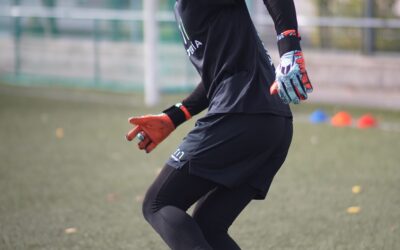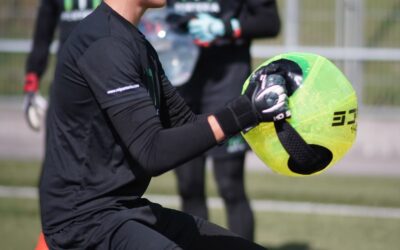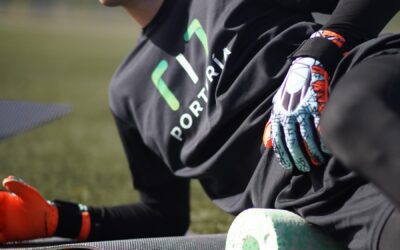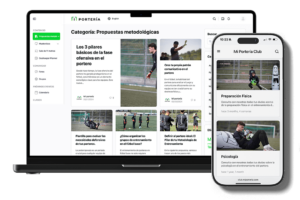[vc_row][vc_column][vc_column_text]
Sports and training have evolved along with science. Several research and scientific advances related to sports, especially physical preparation, provide professionals with a wide range of methods and equipment specifically designed to improve their athletes’ physical condition.
We can notice that change when we observe the goalkeeper’s physical preparation. The very same coaches have been implemented all those new training methods and they are familiar with the equipment that allows them to put them into practice.
Regarding conditioning workout for the goalkeeper, today everything is about strength coaching, especially the one the goalkeeper displays during the competition: functional explosive power. In this matter we know isoinertial pulley exercises, plyometric workout, etc. It is quite important but beyond the obvious reality, the goalkeeper’s conditioning training demands when competing are not simply that, there are many other factors.
To us, goalkeepers’ muscle coordination training to catch or block the ball is crucial, quantitatively and qualitatively. This is when the concept “muscle coactivation” arises. Muscle coactivation allows muscle groups surrounding a joint to become stiffer at some point. The degree of stiffness needed to succeed will depend on the demands of the action and the ability of the athlete to control it (Vera, Barbado, Flores, Alonso & Elvira, 2012).
By simply extrapolating this concept to the goal, any action, for instance, a ball retrieval such as high frontal ball catching or high saving requires the work of a group complex of joints like the scapula-humerus one, or joints like the elbows and wrists. If these joints cannot generate coactivation, it will be impossible for the goalkeeper to catch the ball, since the power of the ball would end up beating the goalkeeper’s.
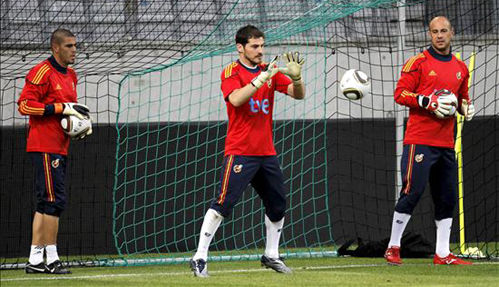
This case not only occurs in actions when there is not a ball retrieval. In other actions like hand deflections or foot clearances stiff hips or shoulders are crucial, so the goalie can resist the power of the ball in order to catch it and then change its trajectory.

While it may appear a hard concept to deal with and train, and more typical of elite work, since we may think we will need a very specific expensive equipment, nothing could be further from the truth.
As goalkeeping coaches, surely, we have ever used a bossu, fitness ball, tobu, etc. in our training schools or centres. This kind of equipment is known as unstable surfaces.
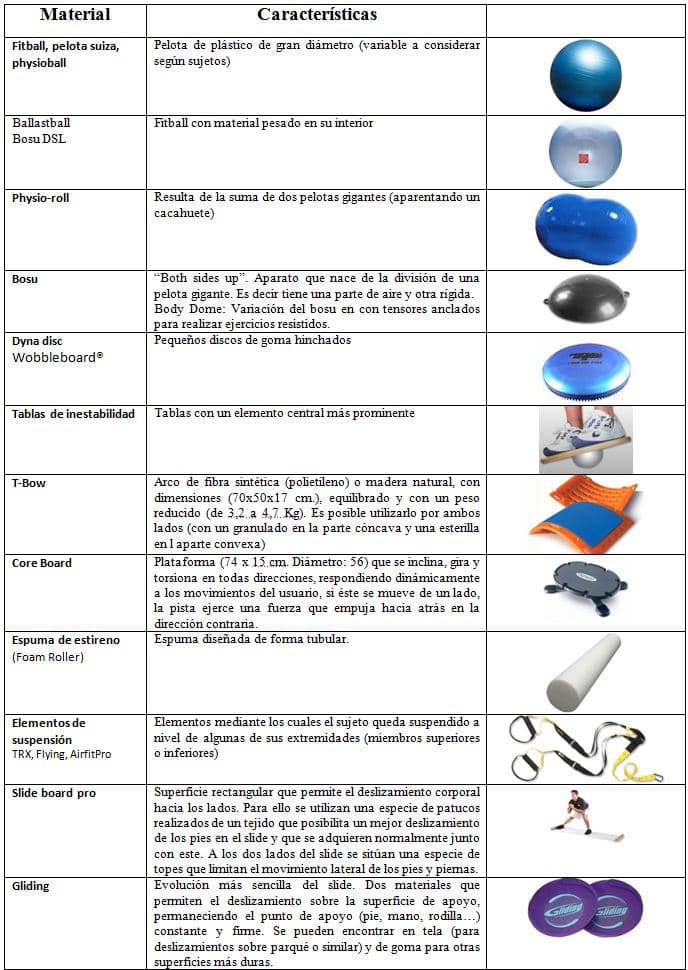
Science has proven with different research that one of the many acute effects that training on these types of surfaces provides is the increase in muscle co-activation. Therefore, it is simple to stress or improve this ability in our goalkeepers, since practising simple exercises on these types of surfaces can improve their conditioning catches, deflections, clearances, etc.
For instance, when we do a frontal plank on a bossu, we are not only working the CORE, but also, we get our scapula-humerus muscle complex work concertedly making our goalie’s shoulder stiffer, so he/she will be able to block the ball easily later. If we add two dumbbells and use our hands instead of our elbows, in addition to work shoulder stiffness, we can also include elbows and wrists in the workouts.

In essence and, as a conclusion, we think that including scientific evidence in conditioning fitness of the goalkeeper is easier than it first sounds. As you may see, with barely equipment and a bit of imagination, we get to improve the performance of our goalies.
That said, is workingout using unstable surfaces as contextualize as possible? Is there any chance of getting a better approaching to the conditioning demands of the goalkeeper’s competition? How is the muscle coactivation demand like?
The approach we suggest regarding the use of these unstable surfaces shows an initial workout for off-season or preseason stages that we will start in a few days. But if you really want to stress and improve the conditioning performance of the goalkeeper, the approach must be much deeper and more specific.
The most important thing to achieve our goals is to work coactivation by designing exercises that include feedback and feedforward, suggesting progressions on them, or even doing exercises that simulate real game actions from a demanding fitness level.
In future posts, we will discuss in depth the meaning of these concepts and will show you exercises to better illustrate that conditioning workout we talk about.
[/vc_column_text][vc_separator][vc_column_text]
BIBLIOGRAFÍA
Ruiz, M. J. (2013). Escala de percepción del esfuerzo y activación muscular en ejercicios de estabilización del core. (Tesis Doctoral). Recuperado de: https://www.educacion.gob.es/teseo/imprimirFicheroTesis.do?fichero=40316
Vera-Garcia, F.J., Barbado, D., Flores-Parodi, B., Alonso-Roque, J.I., & Elvira ,J.L. (2012). Trunk muscle activation in spine stabilization exercice. Revista Internacional de Medicina y Ciencias de la Actividad Física y el Deporte, 47.
[/vc_column_text][/vc_column][/vc_row]

